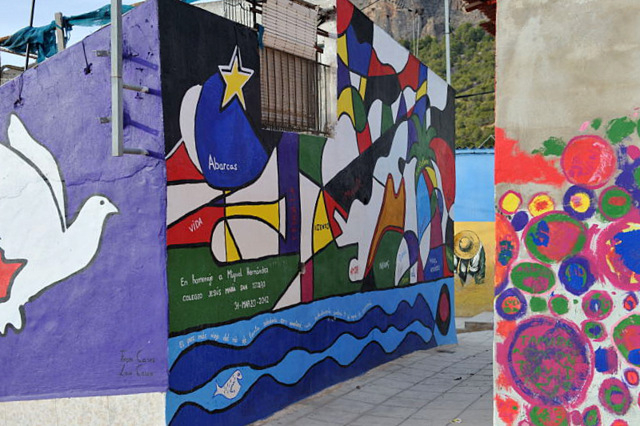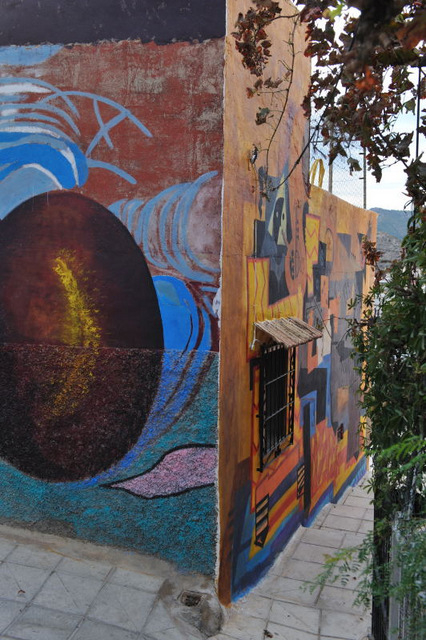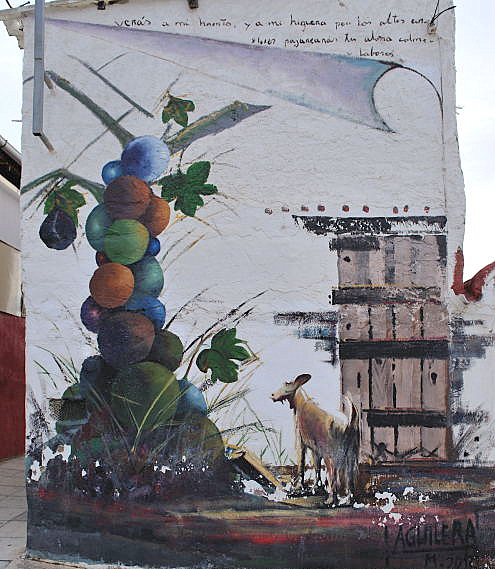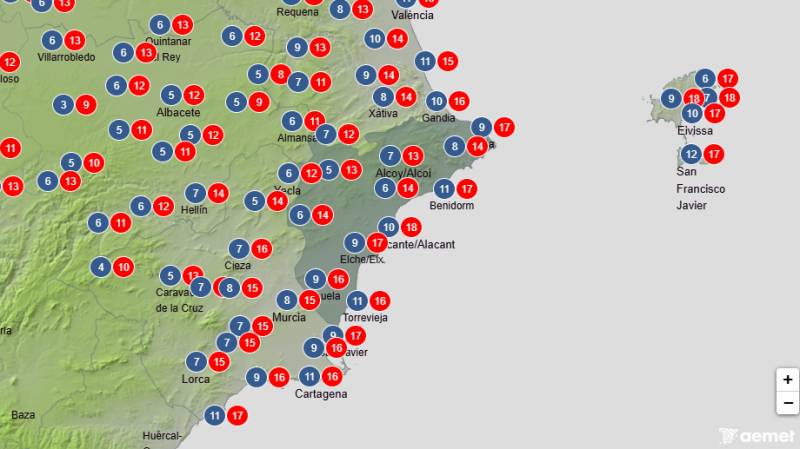

Guidelines for submitting articles to Mazarron Murcia
Hello, and thank you for choosing Mazarron Murcia to publicise your organisation’s info or event.
Mazarron Murcia is a website set up by Murcia Today specifically for residents of the urbanisation in Southwest Murcia, providing news and information on what’s happening in the local area, which is the largest English-speaking expat area in the Region of Murcia.
When submitting text to be included on Mazarron Murcia, please abide by the following guidelines so we can upload your article as swiftly as possible:
Send an email to editor@spaintodayonline.com or contact@murciatoday.com
Attach the information in a Word Document or Google Doc
Include all relevant points, including:
Who is the organisation running the event?
Where is it happening?
When?
How much does it cost?
Is it necessary to book beforehand, or can people just show up on the day?
…but try not to exceed 300 words
Also attach a photo to illustrate your article, no more than 100kb

Murales de San Isidro, Orihuela
An impromptu gesture which became a monument to freedom of expression
 A monument to Miguel Hernández and his determination to stand up for what he believed in: click Miguel Hernández for more information about the poet of Orihuela.
A monument to Miguel Hernández and his determination to stand up for what he believed in: click Miguel Hernández for more information about the poet of Orihuela.
May 1976 was a time of great uncertainty throughout Spain. General Franco had died just six months previously, no-one could be certain whether the dictatorship would be prolonged without him or whether democracy would prevail, and different sectors of society were testing the limits of their theoretical new-found freedom.
 At this time the local fiestas in the San Isidro area of Orihuela, a poor and even marginalized area in the north-west of the city, were being held, and a wave of writers, thinkers and artists converged on the area to pay tribute to the poet Miguel Hernández. Some of the painters began to create murals on the walls of the humble dwellings in the area, and officers of the Guardia Civil stepped in to prevent this expression of liberty, but they were unable to halt the momentum of the movement, and soon the streets were alive with painters and paintings.
At this time the local fiestas in the San Isidro area of Orihuela, a poor and even marginalized area in the north-west of the city, were being held, and a wave of writers, thinkers and artists converged on the area to pay tribute to the poet Miguel Hernández. Some of the painters began to create murals on the walls of the humble dwellings in the area, and officers of the Guardia Civil stepped in to prevent this expression of liberty, but they were unable to halt the momentum of the movement, and soon the streets were alive with painters and paintings.
 In 2012, to commemorate the 70th anniversary of the poet’s death, the Town Hall announced that it was launching a program to restore some of the original paintings and create new ones, and the result is a cascade of colour and creativity running down the hillside streets, creating an open-air museum and memorial to the poet and his beliefs. In 2013 more murals have been created and restored, and there are plans to bring the total up to over a hundred during 2014. Collaborating in the project are not only artists, but also schools, disabled groups and other associations in the city.
In 2012, to commemorate the 70th anniversary of the poet’s death, the Town Hall announced that it was launching a program to restore some of the original paintings and create new ones, and the result is a cascade of colour and creativity running down the hillside streets, creating an open-air museum and memorial to the poet and his beliefs. In 2013 more murals have been created and restored, and there are plans to bring the total up to over a hundred during 2014. Collaborating in the project are not only artists, but also schools, disabled groups and other associations in the city.
 Some of the paintings are obviously political in their content, such as the woman trying to shake barbed wire and chains out of her hair and those which feature political slogans, while others quote Miguel Hernández’s poetry. Equally, there are images which simply reflect poignant scenes from everyday life: every visitor will have his or her own favourite.
Some of the paintings are obviously political in their content, such as the woman trying to shake barbed wire and chains out of her hair and those which feature political slogans, while others quote Miguel Hernández’s poetry. Equally, there are images which simply reflect poignant scenes from everyday life: every visitor will have his or her own favourite.
This is a fascinating visit, although the ramshackle gypsy nature of the area in the north-west of the city may be off-putting for some potential sightseers. The Town Hall does organize guided tours for the nervous, enabling visitors to visit with a greater feeling of security and receive more excellent information from the guide, but even without company it’s well worth a look.
 It’s certainly a fascinating and inspiring place to visit, and a really interesting addition to a “monumental morning” out in the city, as well as a poignant window into a time of upheaval and change, and one of the most important periods in modern Spanish history.
It’s certainly a fascinating and inspiring place to visit, and a really interesting addition to a “monumental morning” out in the city, as well as a poignant window into a time of upheaval and change, and one of the most important periods in modern Spanish history.
At the same time, it’s hard to forget that this is something more than a simple artistic curiosity: it is also a reminder of a time when Spain was teetering on the brink of falling back into dictatorship and tyranny, and commemorates a man who died in prison for his Republican views and outspoken opposition to the Civil war in Spain during which so many thousands of people were executed.
 Although this is a poor area, and there are reminders all around of the harsh reality of our own economic crisis, this is truly one of the great monuments to the spirit of freedom of speech and the spirit of democratic expression.
Although this is a poor area, and there are reminders all around of the harsh reality of our own economic crisis, this is truly one of the great monuments to the spirit of freedom of speech and the spirit of democratic expression.
Curiously, had the history of Orihuela taken a different turn, this could have been one of the more exclusive residential areas: its hillside setting gives it panoramic views out over the city, and back along the Segura flood plain to Monteagudo and the city of Murcia.
How to get there:
The best way to see San Isidro is to park in the city itself, and walk along the Calle Santiago, heading out of the centre to the north-west, past the churches of Santiago and Monserrate. This street then becomes the Calle Capuchinos, and you will pass a square in which the large red statue paying homage to the Oriol stands: at the far end of the square, bear right on the Calle de la Samaritana, and follow the road round to the right at the end. Here you will see a recreation of Picasso’s “Guernica” on the wall of a house, and this marks your arrival in San Isidro. Turn right up the hill, and follow your instinct!
your arrival in San Isidro. Turn right up the hill, and follow your instinct!
The district is about 15 minutes’ walk from the centre of Orihuela, if you can resist the temptation to stop off in the monumental churches and shady parks on the way!
Alternatively, it is possible to drive up to the area, which is best attempted with a map which can be obtained from the tourist office. Use the convent of San Francisco as a marker to head for and once having encountered the tree lined square, then turn right and head up the hill.
Click for Carrer Cami Vj Oriolet
Click for Tourist Office Orihuela

































